Reptile & Amphibian
News Blog
Keep up with news and features of interest to the reptile and amphibian community on the kingsnake.com blog. We cover breaking stories from the mainstream and scientific media, user-submitted photos and videos, and feature articles and photos by Jeff Barringer, Richard Bartlett, and other herpetologists and herpetoculturists.
Thursday, June 23 2016
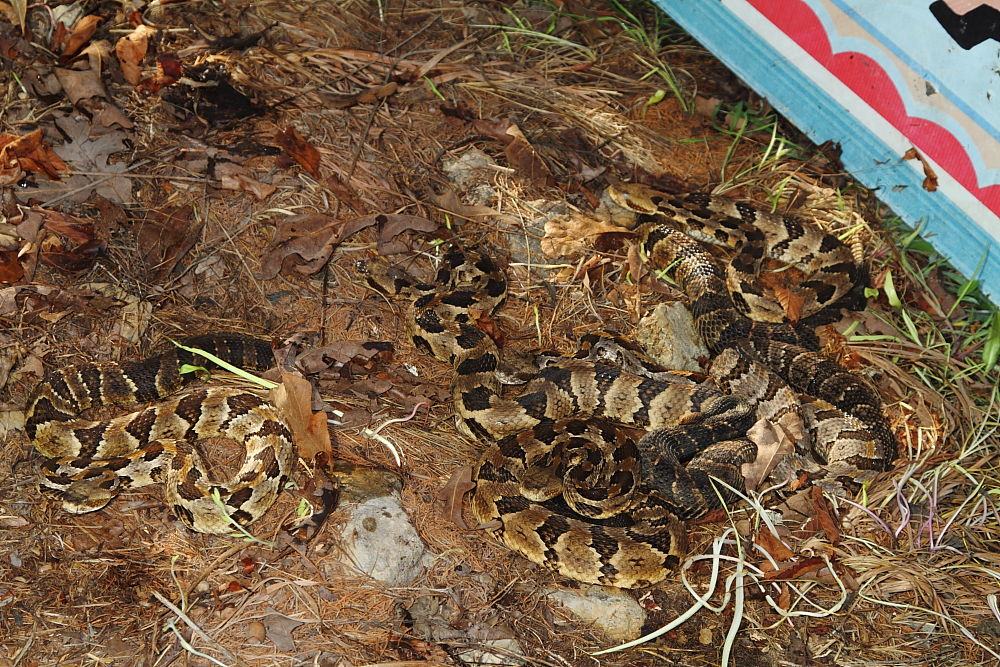
5 Timber Rattlenakes, Crotalus horridus, found under the same tin
I wish I could share a picture of my face and a recording of the words coming out of my mouth when Phil Peak and I lifted up a piece of our artificial cover and bore witness to the sight in this photograph! Moments before we had found 1 Timber Rattlesnake beneath a sheet of metal and were feeling really happy about that, so you can imagine how cool it was to find 5 more under a single piece just a short distance away. This particular piece of cover was set out between 2 and 3 years ago. We have had some warm weather this spring, but the 5-7 days leading up to the day we made this flip were unseasonably cool with a lot of rain. On the day we arrived conditions had changed and the sun had finally broken through the clouds. These 5 snakes had emerged weeks earlier but after many days of cold temperatures they all congregated at a place where they knew the heat would arrive once the weather broke.
Phil and I were at the right place at the right time.
Several hours later the blazing sun scorched this same piece of metal and caused it to reach temperatures well over 100 degrees and the snake most certainly found a new place to hide…but only after we were able to capture the moment with our cameras! Spring is turning to summer in our area and it appears that mild days are behind us and the real heat of summer lies ahead. We will continue to check our materials, but the real climax of flipping season is probably over for the year. That is kind of depressing, but at least it was good while it lasted and we had the opportunity to be at the right place at the right time after making some effort to set our table.
Tuesday, June 21 2016
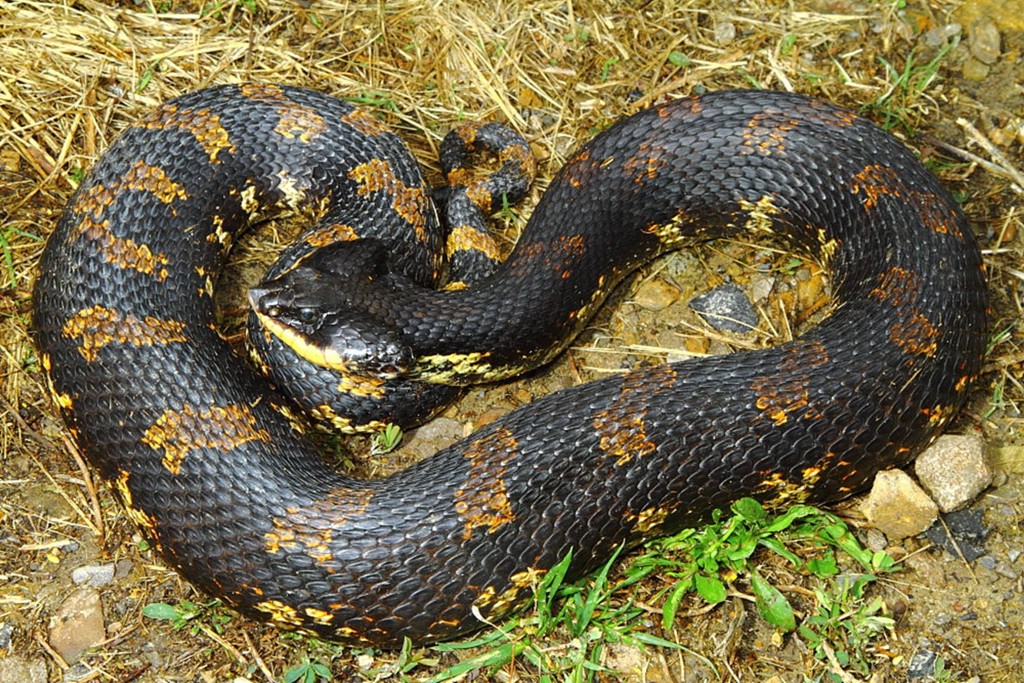
Eastern Hognose Snake Heterodon platirhinos
This large Eastern Hognose Snake is the first Phil Peak and I ever recorded from Bell County, Kentucky. Phil spotted this snake out basking among a pile of rocks on top of a strip mine surrounded by secondary growth forest. Our group nearly decided not to hunt the area where this snake was located, but Phil liked the looks of it and demanded that we stop and poke around, so it was fitting that he found the nice big Hognose.
While there is no doubt that species diversity is impacted in a negative way by the process of strip mining, the mined areas recover quickly and provide a kind of artificial oasis for many large game species like Bear, Elk, Timber Rattlesnakes, Copperheads, and Hognose Snakes. After many years of experience I can say that I would rather search on strip mines than natural areas where no disturbance has taken place. This snake was a very welcome find on an otherwise slow day and to top it off the snake was just as calm as could be and never played dead. Every year I see people posting pictures and videos of their Hognose Snakes playing dead. That was fun for me once, and since then I prefer to get pictures of the snake BEFORE it goes into the routine.
Wednesday, May 4 2016

I don’t know about you, but when Spring time hits I get super busy! All of my exotic pythons are laying eggs, boas are giving birth, colubrids are breeding, cages need to be cleaned, snakes are feeding heavily again, work is really busy, sales are brisk due to tax return season…and on top of all that it is finally time to get out and find some wild animals in nature! I like to travel great distances in search of some of the more difficult to find species, but on some weeks I don’t have the time. So it is nice to be able to get out and find some beautiful herps close to home. I live in Louisville, KY, which is billed as America’s 16th largest city but is really the Nation’s largest big town. Even so, it is possible to find all kinds of neat reptiles and amphibians in urban and suburban settings in my area. Sometimes I am stunned by how close neat animals can be found around the city along roads that I drive by at top speeds most every day. Such was the case with this Cave Salamander Eurycea lucifuga. A member of the Lungless Salamander family, he was found in a suburban neighborhood where you could literally see 11 houses and their backyards. It took all of 5 minutes to find this little guy was hiding under a piece of tree bark after a quick trip to the grocery and other errands. When I got home after my big “hunt” the ice cream I bought was still frozen! Fun Times!!
Monday, May 2 2016

When taking pictures of reptiles there are two qualities that I struggle to strike a balance between. One is crisp focus/depth of field and the other is proper coloration. In order to get crisp focus across my entire image I use flash so that I can set my f-stops to 18-22. When I do this I get great depth of field, but the flash also puts glare on shiny scales and distorts color. When I do not use flash I get great coloration, but my depth of field suffers and I lose focus quality. This is a very frustrating situation for me that I need to learn how to overcome. In the picture of this corn snake I am very happy with color saturation and lighting but am not happy with my depth of field. Note how there is some blurriness as you move toward the top of the photo. This year I will be experimenting with solutions and hope to find a way to reduce the amount of light my flash units emit so that I can strike a balance between natural coloration and crisp focus/depth of field. Wish me luck, and if you have any secrets please share them with me!!
Friday, April 29 2016
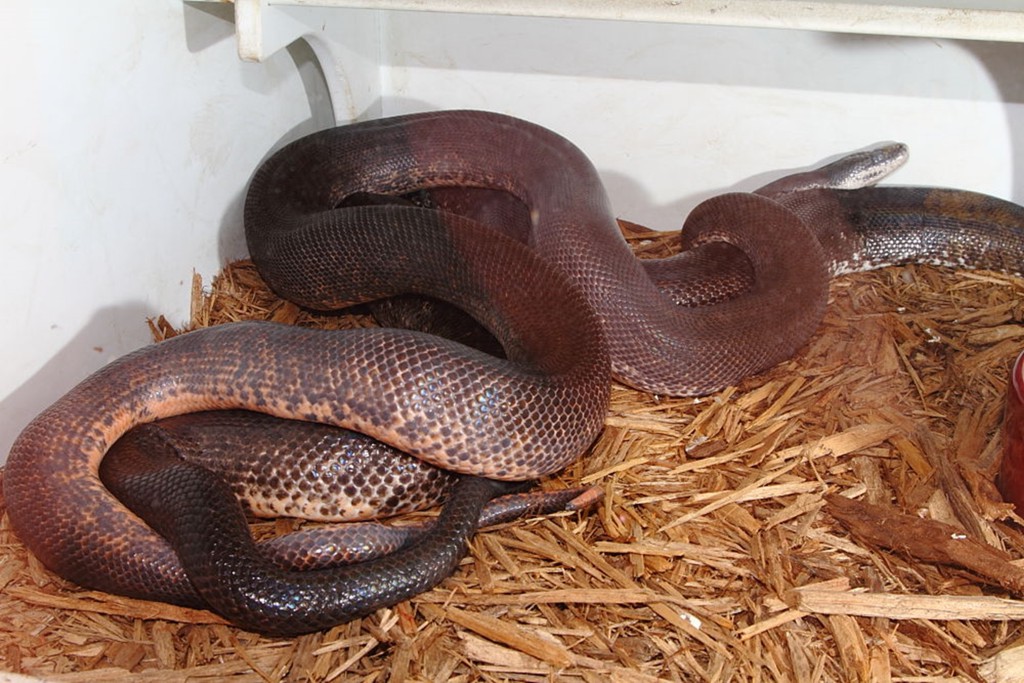
Savu Pythons (Liasis mackloti savuensis) breeding
I discovered my Savu Pythons (Liasis mackloti savuensis) mating on 25 April 2016. The day before I noticed my female was swelling so even though the male was about to shed, I introduced the female into his cage. They were breeding the following morning. This pair has been bred before with spectacular results. Unlike many other python species, Savus tend to breed when the temperatures rise and days are longer. In fact, during the winter months my adults resume feeding, but as soon as things warm up my males go off food and switch into breeding mode. I am not sure if this breeding will result in a gravid female. Instead, I view this as an early season warm-up for the pair. The female has been properly pre-conditioned and I am hoping for babies later this Fall!
Wednesday, April 27 2016
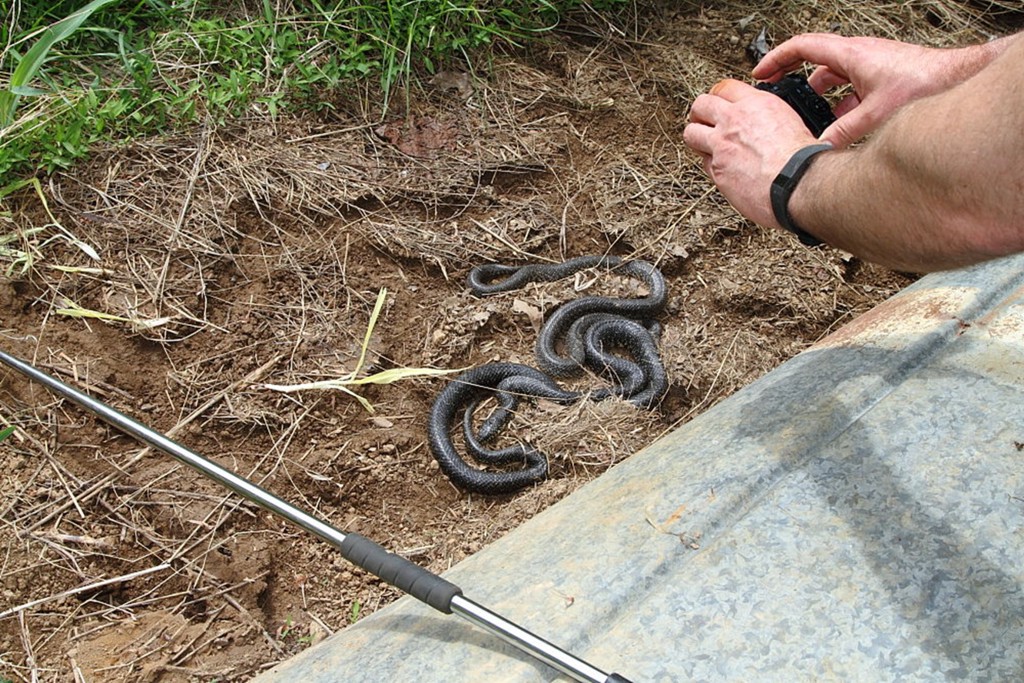 Winter is long, cramped, and filled with stressful family and social gatherings. It is so nice when all that stuff is over, the sun begins to shine again, and Spring arrives in full force. This photo sums up what Spring is all about for me. Few moments in life compare to that rejuvenating and magnificent time when friends can venture out across the countryside and use snake hooks to flip metal with sexed pairs of Kingsnakes preparing to breed underneath. Capturing these in-situ moments with cameras is an absolute must because Winter returns in the blink of an eye and I find myself staring at these pictures on my computer during snowy nights longing for the days when the Sun shines bright and the snakes return. Nothing Beats Spring!!
Wednesday, April 13 2016
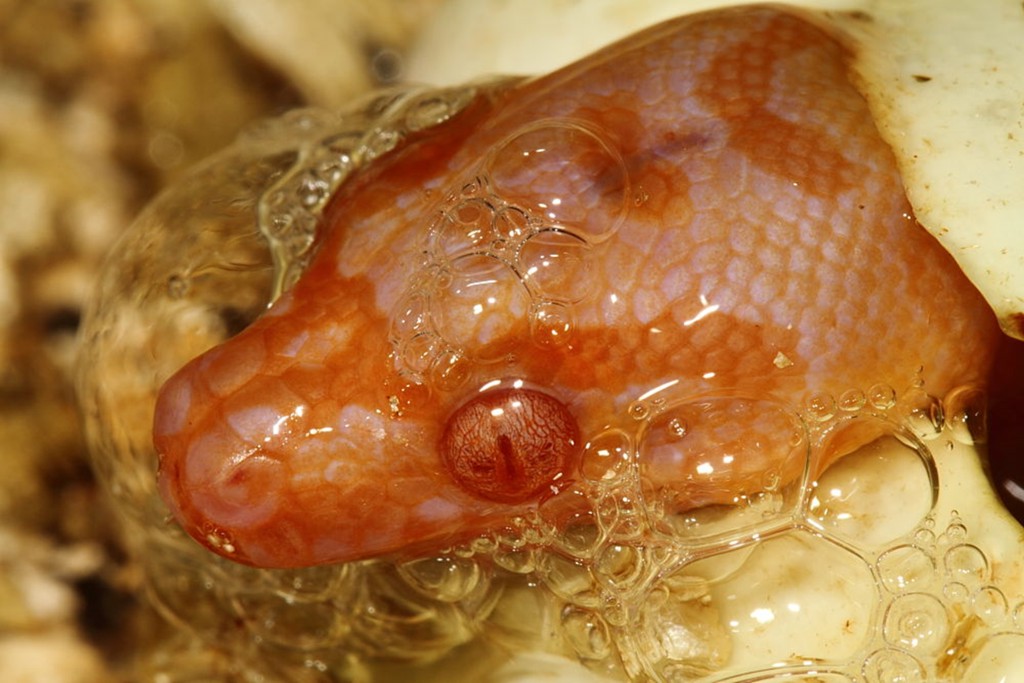
My first Albino Carpet Python clutch of 2016 hatched from 23-25 March and I was lucky enough to be able to capture several nice pictures of the process.
For me, hatching snake eggs is something that keeps me involved in snakes year after year. It is the big reward. All year long I work hard to clean my snakes and keep them watered. I pay thousands of dollars to keep them warm and on rodents to feed them. My feed night is Friday each and every week, so I never get to go out for a night of fun on Fridays. Instead I am stuck at home after a long day at work with about 5 hours of extra work. But somehow all of that and the other downsides of keeping snakes vanish and disappear once eggs begin to hatch. It is a powerful moment when our eggs hatch and new life is brought forth. Where there once was nothing, there is suddenly something…and it is alive! Life can be messy, so I really liked getting this image where there is tons of bubbly egg goo all around the new living baby snake.
I am often asked why I like snakes and my response is that if you have to ask that question there is no way you would ever be able to understand. Seriously, if you can’t look at a picture of a baby python taking its first look and first breath on earth and find some way to be able to appreciate that the rest of us will enjoy living in an environment where people can marvel at even the lowest forms of organisms entering our rough world for their own one shot at LIFE.
Wednesday, March 16 2016
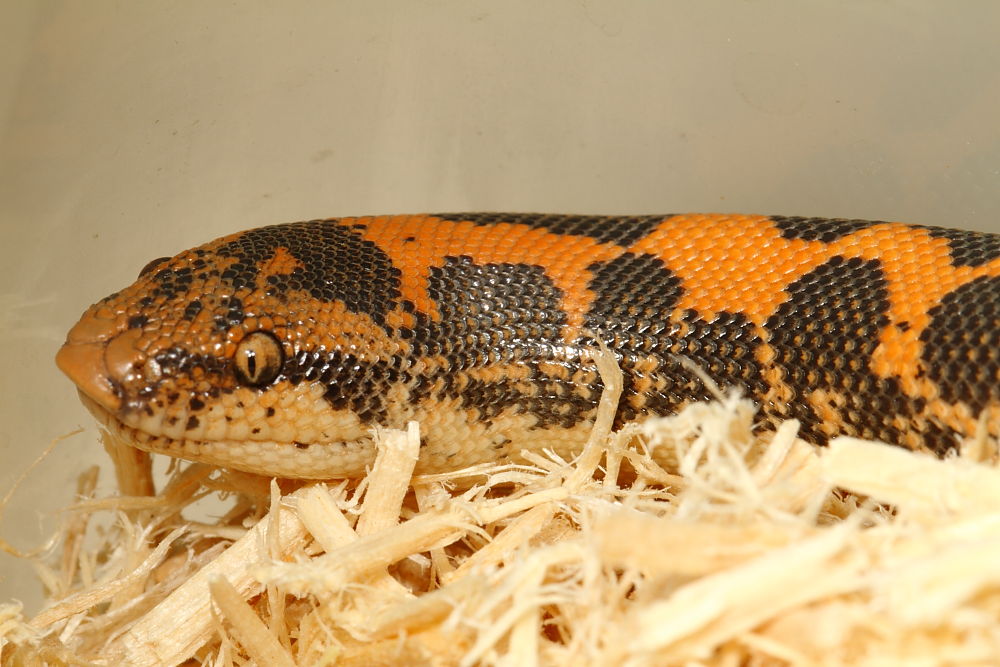
I will never forget my first Kenya Sand Boa experience. I was around 14 years old when I saw my first babies at the local pet store and I had to buy a pair. It took me over a month to pay for them and I took feeding them and making them breeder sized very seriously. By the time I hit 17 I was working at the shop where I bought them and when my female gave birth I called my boss at around midnight to tell him. I was excited, and he was exhausted!(LOL) But when I got to work the next day he had a big banner up across the isles of the store congratulating me. It was the first time I ever bred a Boa. As I inched towards 40 I had bred many species of snakes and learned that they all took up space, so that got me thinking about Sand Boas again. There are no fortunes to be made here, but the fact is that I find the process to be fun. Not sure if this is manopause or not, but here I am breeding these little worms again. Pictured is my holdback female from 2015. Call it what you will, I am guilty as charged!
Monday, March 14 2016
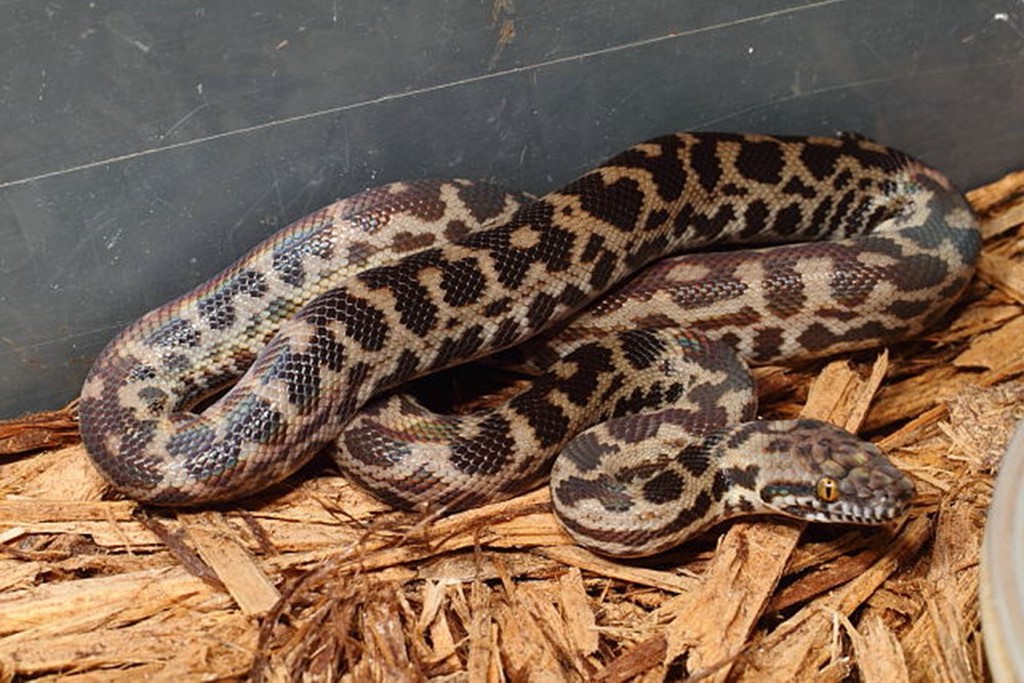
Last week a friend bought a sexed pair of Spotted Pythons from me. It took him 4 weeks to save up the funds, and during that time he asked me all the right questions and got everything ready. Within two hours after arriving home and getting the snake put away he discovered that one had escaped…the female of course!
I hate the fact that people have to go through things like this, but most of the time it takes a loss and a bad mistake in order to learn. When it comes to keeping snakes it is a fact that there are forces working against us all at every turn. Even when it is legal and you go out of your way to do everything right, all it takes in one tiny detail to ruin everything and foul up all the fun. In my experience I have found that my work is never done and that it is best to always be on the lookout for how I can make things better. In this case the snakes were put in a baby rack made for snakes, but they still got out even though the snake was over 7 months old and no longer a baby. When I put baby snakes in a rack I fold up newspaper and put it under the box so that it is raised up and made even tighter with the top of the rack. Of course, that restricts air flow so I have to drill more holes to make sure my snake can breathe! It seems that every adjustment requires an additional adjustment! The work never ends, and if you think your work is done I bet something will go wrong while you are sitting back relaxing thinking that all is well! Be careful out there fellow snake keeper! It is all in the details!!
Friday, March 11 2016
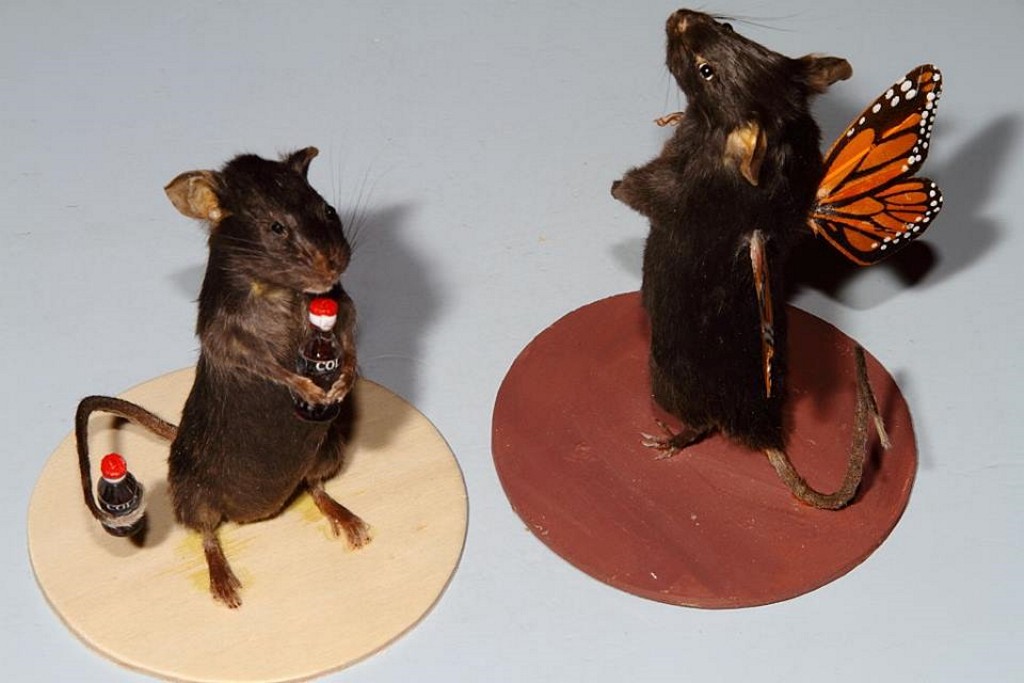
I recently took my daughters to their first reptile show. Once inside they were drawn to a booth with dozens of mounted rats and mice along with rat bone necklaces and mouse skull jewelry. I allowed each of my girls to select a specimen, and as I discussed the terms of the price with the two mouse women a long line formed behind me. I watched as everyone in the line attempted successfully to sell their dead rodents. The herp show had gone green and was recycling dead feeders! I learned that there was a demand for dead snakes too! My favorite item was a jumbo rat mounted on remote controlled wheels. I could sure have some fun with that!
Wednesday, March 9 2016
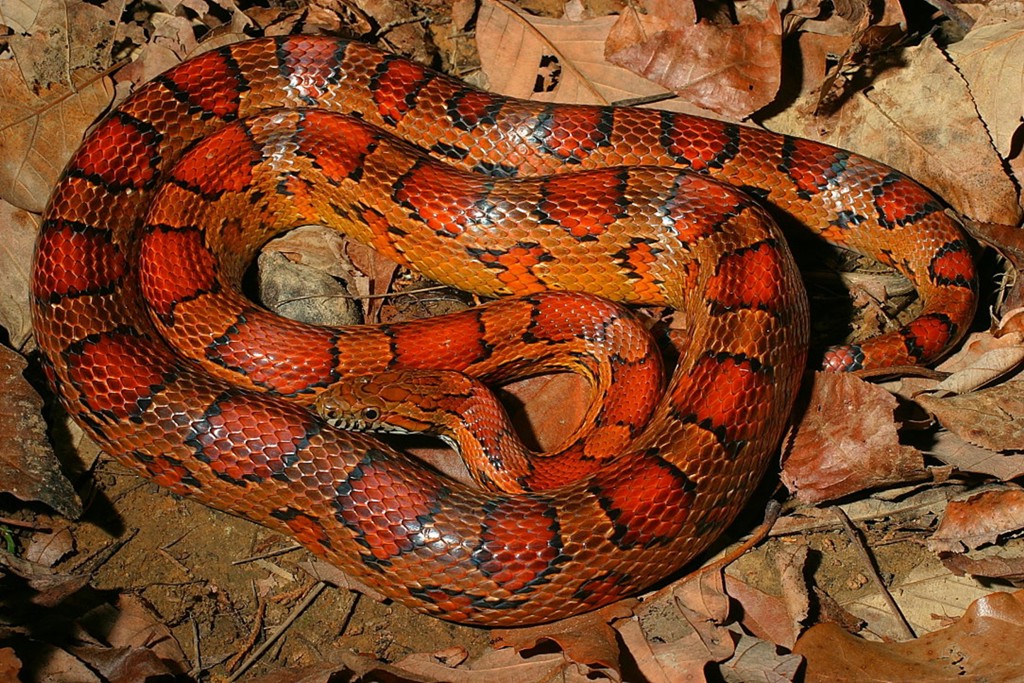
In high school I got my hands on Barbours book about Snakes in Kentucky and will never forget gazing at the picture of the Corn Snake and learning that a small and isolated population of these snakes occurred in Kentucky. Little did I know that the names of the other students who checked out that book would be my future bosses and co-workers at The Louisville Zoo, or that my friend Phil Peak and I would one day focus in on this serpent and spend countless hours in the counties that seemed so far away and foreign to me at the time.
It took some effort to locate my first specimen by the time that I was in my 20’s, but once I began to figure them out I was able to locate well over 100 of them in a very confined area. Phil and I were able to establish a small group of these snakes in captivity and we donated babies to educational facilities across Kentucky. We also gave them to people in our local Herp Society so that they could be used in presentations, and also so that our local people would not feel the need to go down and remove additional specimens from the wild. Phil and I had a lot of questions about this isolated population of snakes so we began to record as much information about each specimen as we could. In addition to blotch and scale row counts we were also able to determine when they emerged, when they bred, when they laid eggs, when the babies hatched, and when the adults went back underground to spend the winter. After compiling all of our data we began the process of publishing our work in a scientific format. This process was long and complicated for us, and we were fortunate to meet Danna Baxley who came onboard with our efforts as a co-author and helped us organize the work in a way that was presentable and acceptable to the newly formed Journal of North American Herpetology where it was published in 2015. To anyone interested in the scientific paper, here is a link to the PDF file that can be found on the Center For North American Herpetology website: http://www.cnah.org/pdf/88314.pdf
It is difficult to fully describe everything that was involved in this whole process in the short format here, so I will close it out by saying that the journey from my high school library all the way to being published in a scientific journal was a long and interesting experience that has left me grateful to the local people of rural Kentucky and to my friends Phil Peak and Danna Baxley whose knowledge and patience made possible what I could not have done on my own.
Monday, February 15 2016
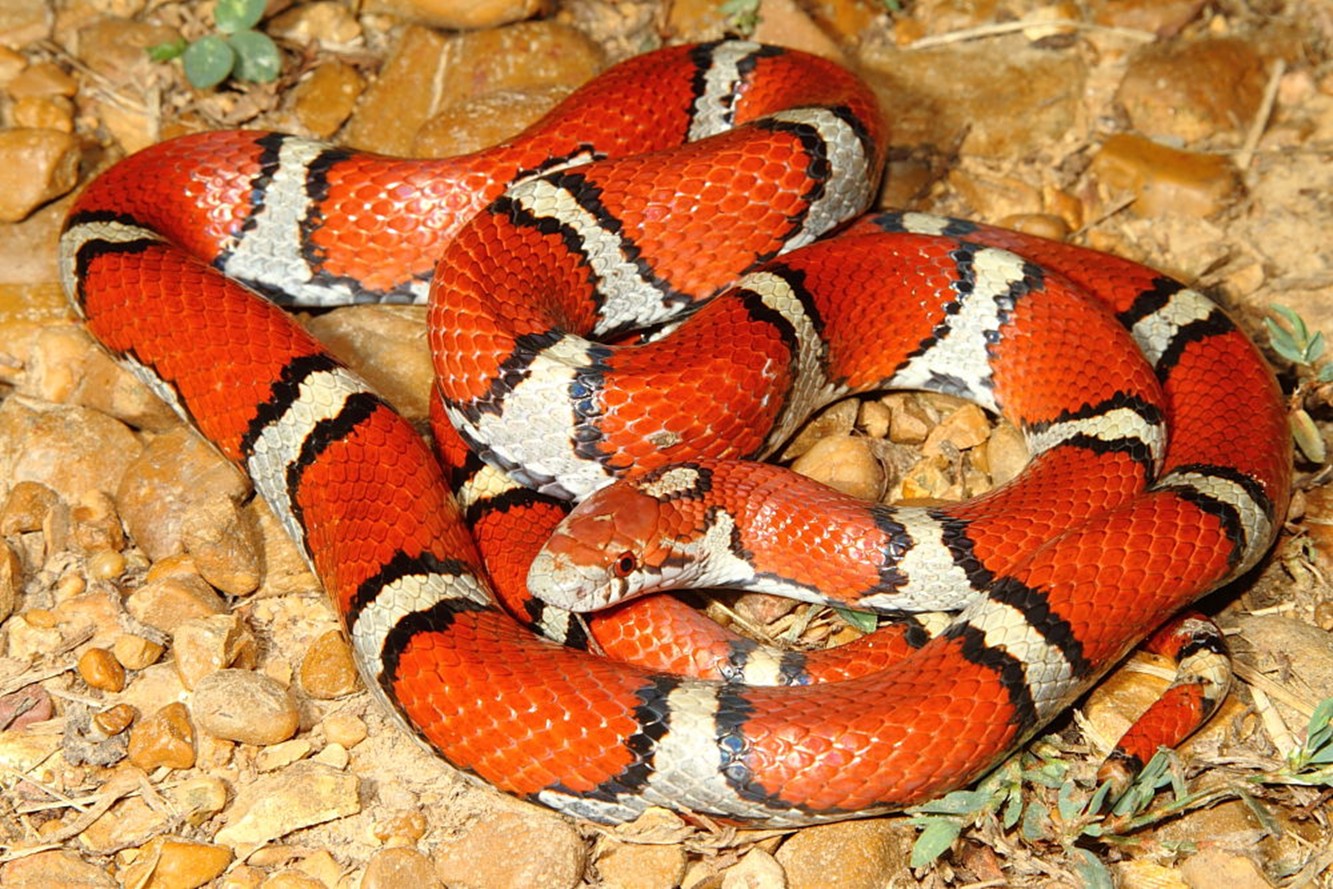
We are fortunate to have a nice population of Red Milk Snakes ( Lampropeltis triangulum syspila) in several western Kentucky counties. In our region it is possible to cruise roads and find these snakes from the time when it gets dark to the very wee hours of the morning prior to dawn. While we try to cruise under conditions that we believe are prime, often even then it is possible to not find any of these snakes…even when other snakes are being found.
The random offerings turned up by road cruising is something that's problematic and usually we prefer to have a little more control over the hunt when possible. So we also deploy artificial cover to help in locating these snakes. We have found that these snakes are attracted to layered sheets of metal, so if you are having trouble finding them, try stacking your metal up. Red Milks in our area live in forested habitat, but like all reptiles they utilize open areas where the rays of the sun reach the surface. We have found layered metal set out where the canopy is open works very well. It is a sight to behold when you peel back a sheet of metal and see such a beautiful high-contrast snake sitting on dull colored metal of the earth tones of the soil underneath. Locating a Red Milk Snake in Kentucky makes any good day better and turns even the worst of days into a nice day for guys like myself.
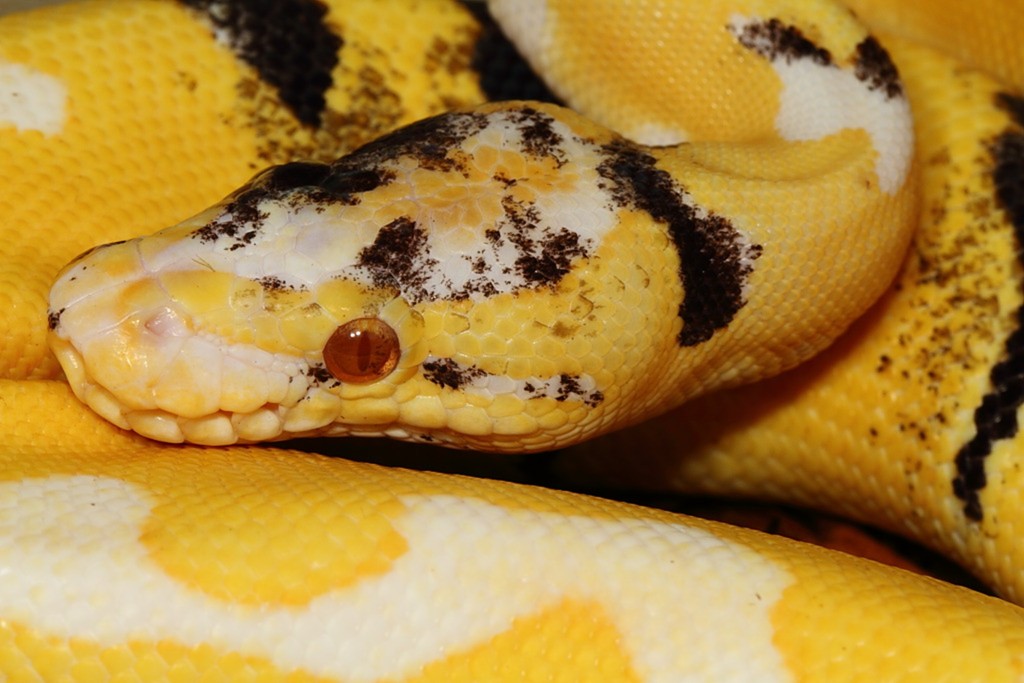
This week I want to share my formula for taking semi close-up pictures of snakes. I like to use these kind of pictures to make business cards, post cards, calendars, and other promotional materials. When trying to sell a snake the buyers want to see as much of the body as possible, so these are not the best option when trying to sell individual specimens, but semi close ups are effective in promoting projects in general. When I take these kind of photos I want for the entire head to be in the picture. I also want the entire frame filled by the body of the animal with as little, “non-snake” materials as possible, especially around the edges of the frame. It is also important to capture as many interesting features of the specimen as possible. You want for everything to be in crisp focus if possible. I took several semi close-up pictures and posted them on social media recently. The picture in this blog got more views, likes, and comments than all the others combined so I would like to try to explain why. At the end of the day the subject needs to grab peoples attention, and this snake certainly does.
Many people in our hobby are sick and tired of seeing Ball Pythons, but even they liked and commented on this picture. The entire head is in the photo and it is in crisp focus, especially the eye. The frame is filled with the body of the snake, with only a little bit of mulch barely visible in perhaps 5% or less of the total field. The Paradox condition of this snake is what makes it interesting, and the semi close-up format really shows off the layering of the pigments. I was able to get some of the additional Paradox markings in the picture with the coils above the head. This snake is also a Super Genetic Banded morph, and I was able to get some of the classic pattern associated with this gene in the coil below the head. I plan to use this photo in my new business cards, on my website banner, and in a new updated kingsnake.com banner ad. I do not mean to come across like some kind of professional photographer, because I am not. In fact, when I look at this picture I see all kinds of things I wish I could have done better. I am just a regular guy trying to do my best and improve my picture taking. I hope that some of what I have shared here will give you ideas on how to improve your pictures as well.
Wednesday, January 27 2016
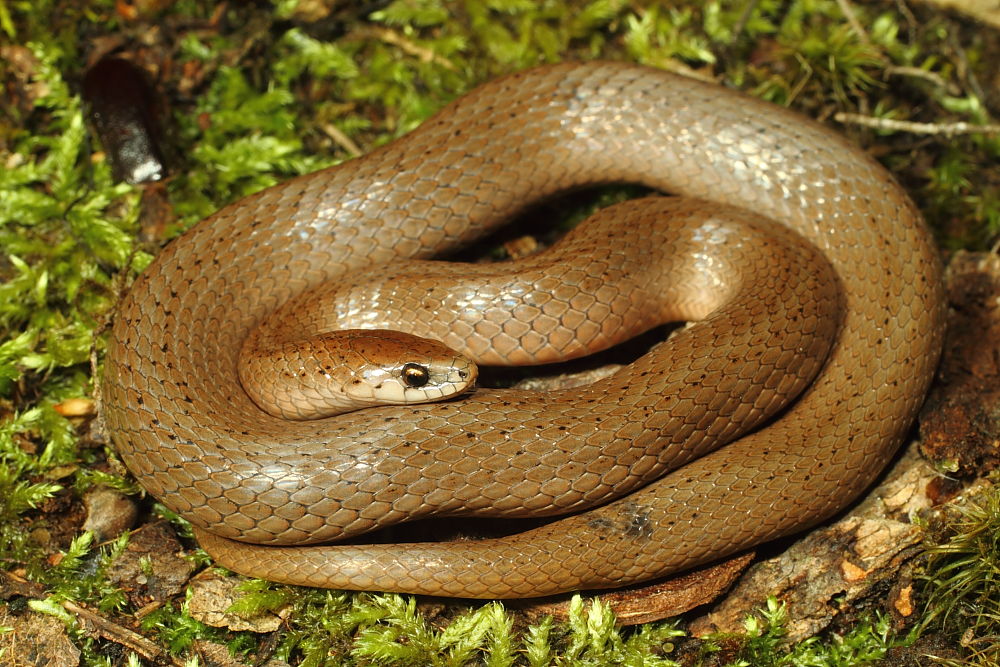
This Smooth Earth Snake, Virginia valeriae, is a repeat offender. For the last several years it has been busted utilizing artificial cover! Most often found hiding beneath logs, leaf litter, or other debris Smooth Earth Snakes are fossorial (live underground) and give live birth to as many as 12-14 live young in the late summer.
A scar, blemish, missing tail tips and eyes can often serve as proof that the same individuals have set up shop and thrive for years under cover at study sites. This is another reason to take time to inspect and photograph even the smaller and most common species at your sites!
Wednesday, January 13 2016
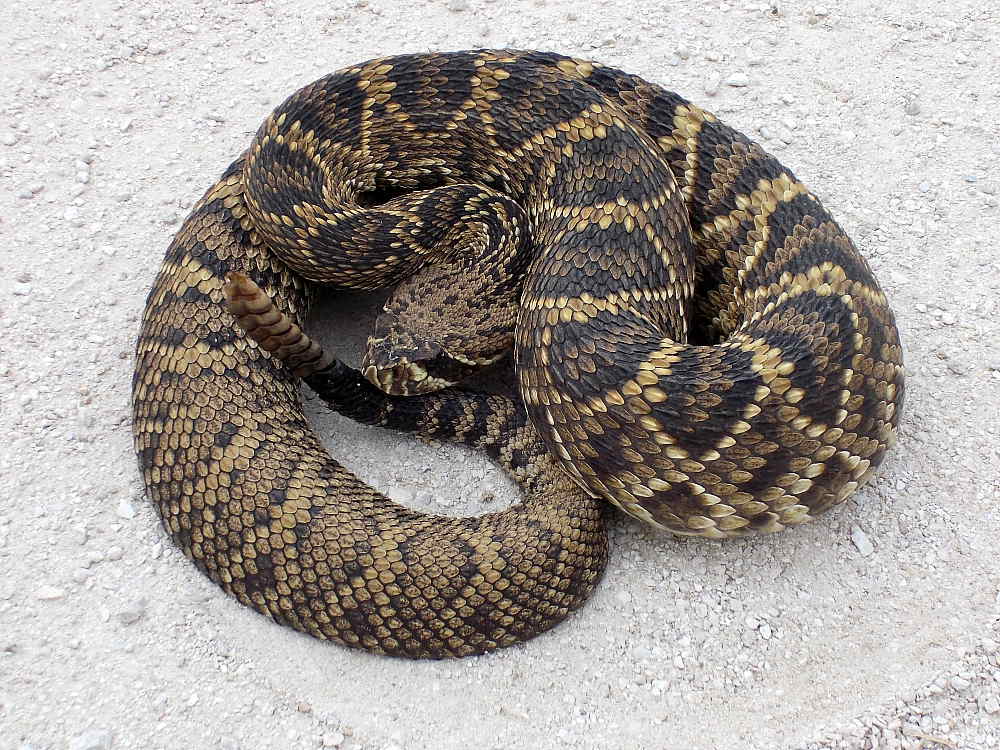
Eastern Diamondback Rattlesnake Crotalus adamanteus
I travel to Florida with my family about every other year and only get to take one day to hunt snakes on each visit, so I am by no means an expert on the finer aspects of Florida snake hunting. Over the years I have been able to locate some really neat and even rare herps, but my favorite find of all time in Florida was this Collier county Eastern Diamondback Rattlesnake.
When I discovered this snake crossing a road I was totally unprepared. All I had was a cheap little pocket camera. I was wearing tennis shoes like a true tourist. I did not even have a snake hook, and I had to resort to using a baby stroller to pose this snake for pictures. There were tourists taking pictures of me using the stroller to pose this snake! I got several pictures and I guess this was the best one. I know it is not the best pose and not so great of an EDB image, but for me it is GREAT! When I look at it I remember seeing that big fat beast from at least 200 yards away and stomping the gas so I could get to it before it escaped. The snake struck at me repeatedly and I can only imagine what I looked like with that baby stroller. The sun was bright, and I even remember how the air tasted when I look at the picture. Sometimes I am unable to get the kind of picture that I am after, but years later when I am at home looking over things I am always happy when I see images I got that may have not seemed so good at the time. Sometimes being able to relive the experience and the memories is a better reward than taking a killer picture. Keep this in mind as you are out in your travels, and just keep your cameras rolling!
Wednesday, December 30 2015
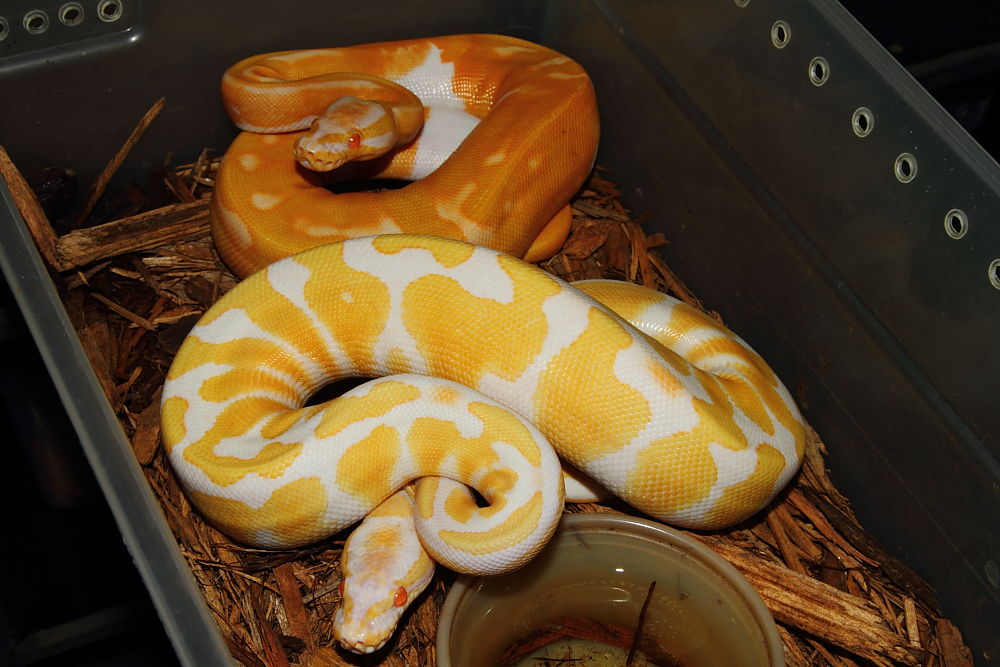
The other day a friend came by and I showed him my recently hatched Super Genetic Banded Albino Pied Ball Pythons. He just about lost it when he saw them. He told me that he thought the pictures I had posted were just photo shopped. As a result I decided to take a picture with both the Abino Pied and a Banded Albino so that people could see the difference.
Ball Python people know that all albinos are not created equal. This Genetic Banded gene I work with is a real color enhancer and pattern reducer, especially when in the super form. Of course, the Pied gene has an effect on color and pattern mixing as well. It is true that the Banded Albinos will lighten with age, but it is also true that Pieds darken with age and are lighter as babies. It will be interesting to see how these Super Genetic Banded Albino Pieds color up as adults.
Wednesday, December 23 2015
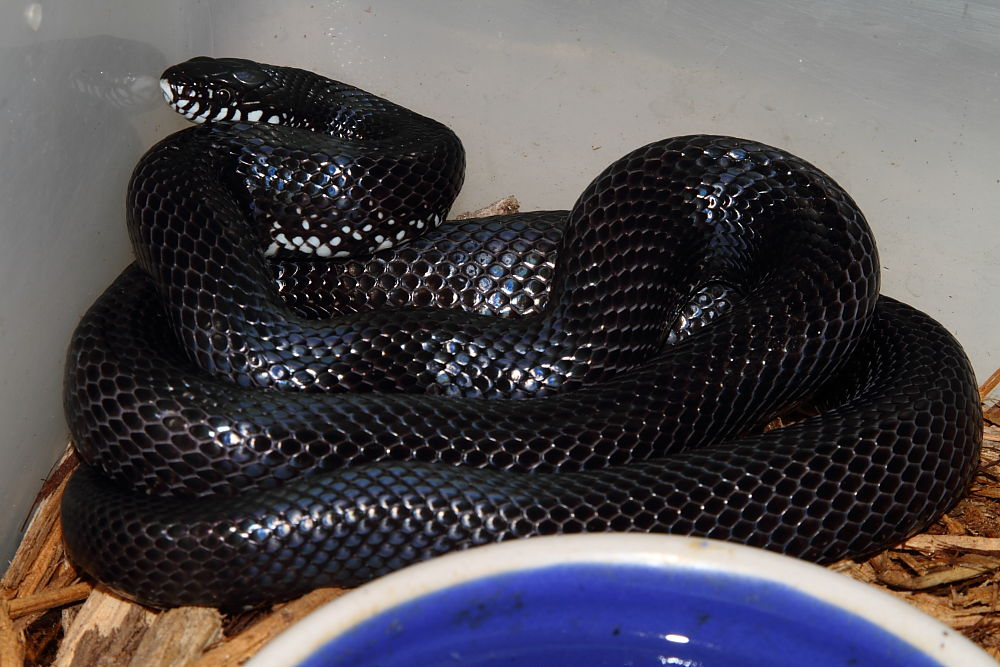
Eastern Black Kingsnake Lampropeltis getula nigra
Since 2003 Phil Peak and I have observed and recorded 760 live Black Kingsnakes in scores of different Kentucky counties. There is a lot of variation out there and I sure like them all, but at the end of the day I have limited space and resources and am only able to keep a handful of specimens. It took some time, but I soon realized that I like the ones around my home town the best of all. What I like so much about the Black Kingsnakes around Louisville are that they have the least amount of pattern and markings and are also a kind of shiny black coloration not seen in all examples of this species.
The captive hatched specimen in the photo is only around 30 inches long but has already lost all signs of the juvenile markings and has already developed the kind of shiny black coloration that makes these my favorite. I have noticed that a lot of my fellow field herpers tend to appreciate the animals that live in their own backyards too, and I think this is great. In addition to the natural beauty that these local snakes have, all of us who spend time hunting snakes also see something else when we look at our local favorites. Let’s face the truth here, life is tough. I can’t speak for everyone, but I can tell you right now that when I look at the snake in the picture I remember the day when I was out in the field with my good friend Phil and we flipped an old rotten board and found the clutch of eggs that this snake hatched out of. On that day there were no jobs, no family dramas, no bills to pay, and no cell phones ringing. Instead the sun was shining and I was a free man out in the woods breathing fresh air and doing what I wanted to do for once. I like that.
Wednesday, December 16 2015
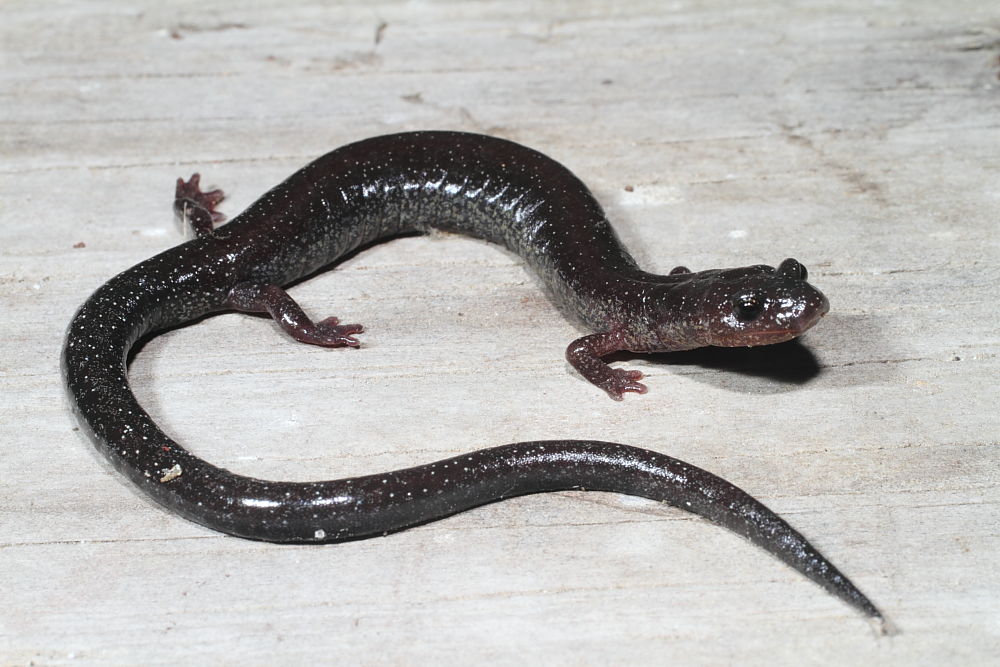
Northern Ravine Salamander Plethodon electromorphus
After herping a place for years and years a person can begin to learn what to expect to find during the course of an outing, but remember to never let your guard down because you just never can tell what your going to find!
Such was the case back in April 2015 when Phil and I returned to one of our favorite snake hunting sites where we expected to see the usual suspects. Instead we flipped up a pair of these Northern Ravine Salamanders. Heavy rains during the right time of year appear to have driven these specimens up to the surface where we could locate them under materials we had set out for well over ten years. After discussions with our local wildlife officials we learned that this species was suspected but not confirmed in this area. Thanks to our efforts, they are now confirmed!
Wednesday, December 2 2015
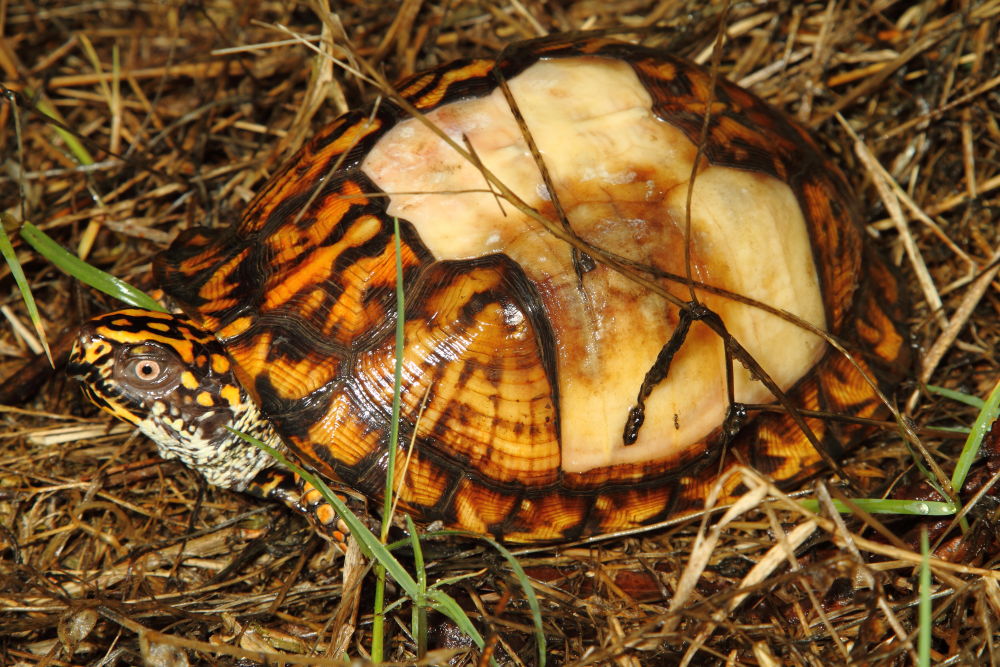
Eastern Box Turtle Terrapene carolina carolinaI took this in-situ photograph of a wild Eastern Box Turtle in May of 2015. Despite missing many scutes, this scarred specimen was out searching for food and behaving completely normally. After years seeing thousands of reptiles and amphibians in the field it has been my experience that turtles can be very tough creatures.
I have seen turtles that have survived all kinds of major injuries, including a Common Snapping Turtle, Chelydra serpentina, whose head was cut in half but survived for years. If you have not seen the Red Ear Slider, Trachemys scripta elegans, that survived having its eyes, nose, and mouth parts cut off you should be sure to google that.
I consider myself to be a humane person, and many of my herp friends are as well. None of us want to see an animal suffer, but think twice before you take any sort of humane action against a wild, free-ranging reptile. You might be surprised by the healing powers that many wounded reptiles possess. We have all seen herps run over by vehicles, and in years past even I might be tempted to, “put a snake out of its misery.” However, time and experience demonstrated to me that a lot of these injured animals have the ability to heal and survive for many years. When legal, I am more likely to move an injured animal to safety than to euthanize it, and I encourage all of you to learn from my experience and give injured wild animals a second chance at survival.
Wednesday, November 18 2015
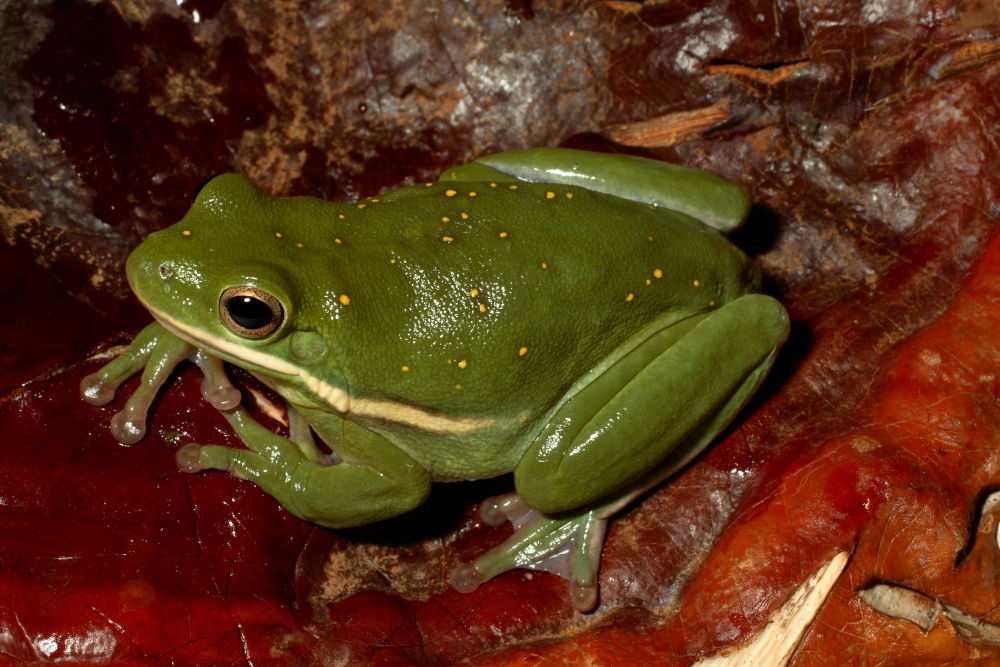
Photographing herps takes practice
Photographing herps is an art form that takes many years to master. Even after many years of practice I can always find something wrong with the best pictures I have taken and, like all of you, I wish I could take better herp pictures. But I am still practicing and learning, and getting a little better each time.
A lot of photographers think you need to have the best this, or latest that, to capture that epic picture. I have a different approach than many herp photographers I see out there. No matter how nice your camera is, someone else has a better one. But it's not the camera that makes the photograph, it's just a tool. Even the cheapest digital cameras can take a killer picture if you learn how to use it properly and learn to work within its limitations. So my first two points for now are that even a cheap camera can capture a killer picture if you take time to learn how to use it, AND if you have the most expensive camera out there you will still find something wrong with the pictures you take and will be plagued with the desire to improve.
I will discuss herp photography more in future blogs, but in the meantime enjoy this shot I took of a Green Tree Frog, Hyla cinerea. And as you can see, even with this photo there is a lot of room for improvement, and it is important that you always see things that way when you review your own pictures!
Wednesday, November 11 2015
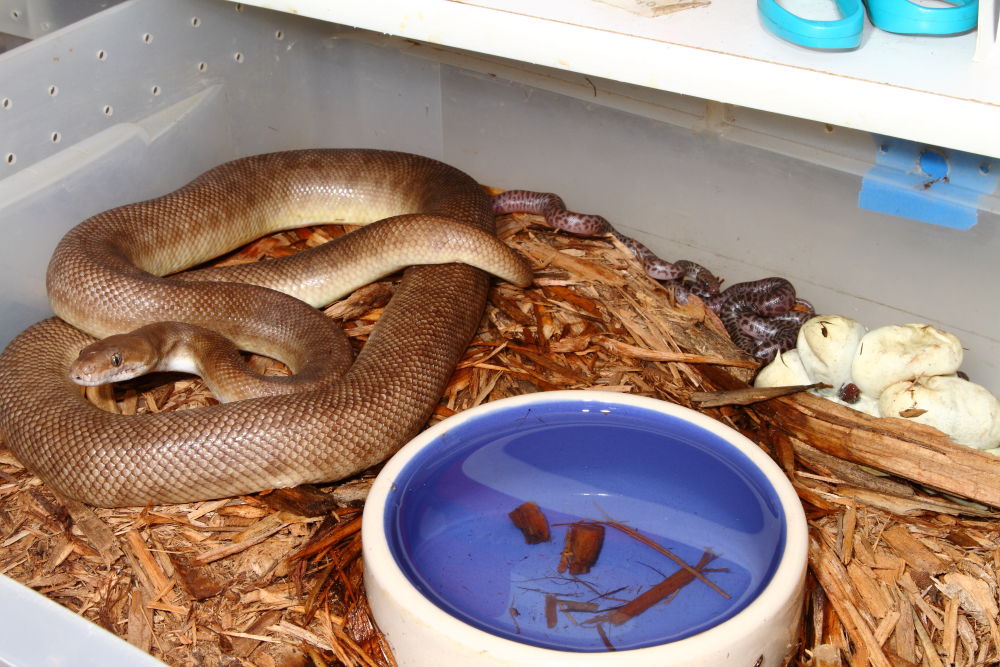
Every year I try to do something in my snake rooms that I have never done before. One thing I tried this year that actually worked out was having one of my Children’s Python maternally incubate her clutch of eggs. I found her on her clutch on 27 April 2015, but I think she laid her clutch 2 days before while I was out gathering native snake data. I kept her in a 28 quart box inside a rack system with 11 inch heat tape mounted on the back wall of the rack and maintained by a Ranco thermometer.
She placed her clutch right up against the tape in the back of the box, and stayed coiled on her clutch, not accepting any meals during the entire process. The clutch began to hatch on 22 June 2015. I found this interesting because I have had clutches hatch much more quickly when incubating with artificial incubation. Sure enough, the babies from this clutch proved to be strong feeders and continue to thrive. I also got a pretty even split of males and females in this clutch. It was fun, I had a good time doing it, and got some nice healthy babies when the process was completed.
Friday, November 6 2015

 The effects of a global economic slowdown are finally trickling down to all of us lowly snake hunters. The prices paid for commodities are in steep decline, and this includes all metals, including the scrap tin loved so much by reptile collectors. I have been getting anecdotal reports about local metal scrappers being offered less than the cost of a tank of gas for entire truckloads of metals that weigh several tons.
Sadly, much of the damage has already been done as tens of thousands of metal pieces have already been stolen and scrapped. This snake hunter is taking great joy in hearing about how upset these metal thieves become when they find out they are not getting paid enough money after spending an entire day destroying prime snake collecting habitat and stealing from people like myself. Perhaps we will all have a chance to rebuild our old sites and it is my hope that the market in base metals does not recover for decades to come! If things go our way we will be finding downed barns with metal to lay out for years to come!
Thursday, October 22 2015
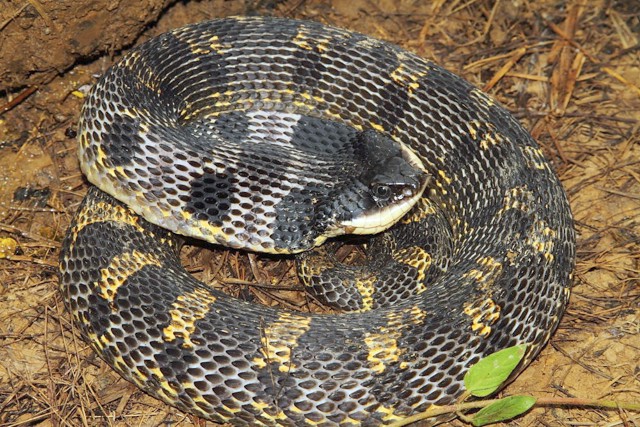 Among those who search for reptiles in North America, there has always been great interest in Eastern Hognose Snakes, Heterodon platirhinos. They are beautiful, variable, display unique behaviors, have an interesting natural history, and are unlike all the other snakes we find locally.
Getting a nice picture of a wild Eastern Hognose Snake can be very difficult because they will roll over on their back and play dead when they feel threatened, and once they go into this routine it is not only hard to make them stop, but they also seem to never look as good once they play dead. During their defensive process they tend to disgorge their belly contents and also stop filling up with air to hiss which makes them look thin and deflated. Take my advice and try to get your pictures of this species before they feel too disturbed and roll over on their backs.
Neophytes will quickly reach down and pick up snakes as soon as they are discovered. When a specimen is discovered the best thing to do is to try to get pictures immediately. When I am on Hognose hunting grounds I carry my camera with me, sometimes it is even already turned on. If the snake tries to escape use a stick or branch to move the animal but whatever you do, DO NOT TOUCH IT WITH YOUR HAND! For whatever reason, these snakes are less disturbed by the feel of natural materials but the feel of your hand will often cause them to play dead upon contact. THINK when you find one of these snakes! Calm down and be patient. Do not give up. Instead, just focus on keeping the snake calm. They will often turn their heads sideways just before they flip on their backs, so if you see them doing this back off a little bit. If they do flip over you can put the snake in a bag for 20 minutes and then carefully dump it out and try again, but even if this works the snake will not look as good as it did the moment you found it. I hope this information proves useful and I wish everyone good luck in finding and getting nice pictures of these spectacular snakes!
Wednesday, October 14 2015
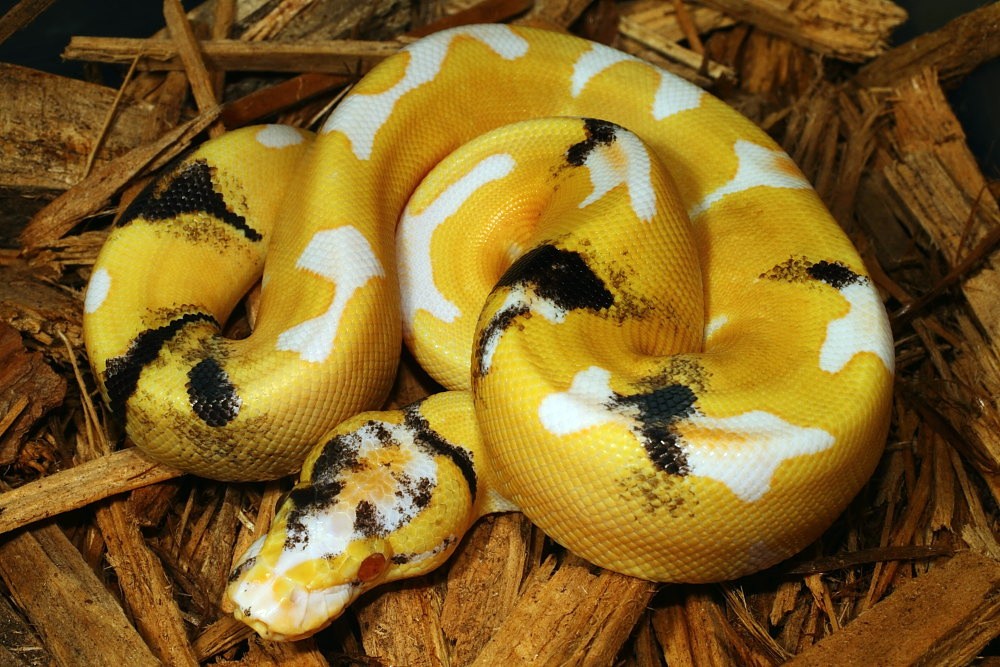
This amazing looking cultivar is a Super Genetic Banded Paradox Albino Ball Python ( Python regius). I had the honor of hatching the first example of this new morph earlier in 2015. People who know me and follow my posts here, on my site, and on social media are aware that I have been hatching a whole lot of Paradox Ball Pythons, especially Paradox Albinos. Friends joke that I must be putting something in my water, but the fact is that after many years and much effort I have hopefully made an advance in how to produce Paradox Ball Pythons.
The Paradox Gene is not fully understood and I am not trying to claim that I fully understand it. What I am saying is that results speak for themselves and that it took more than luck for me to produce Paradox Albinos and other Paradox Ball Python Morphs every year for the past 5! I expect to hatch more in 2016 barring thermostat or incubator malfunctions!
Monday, October 12 2015
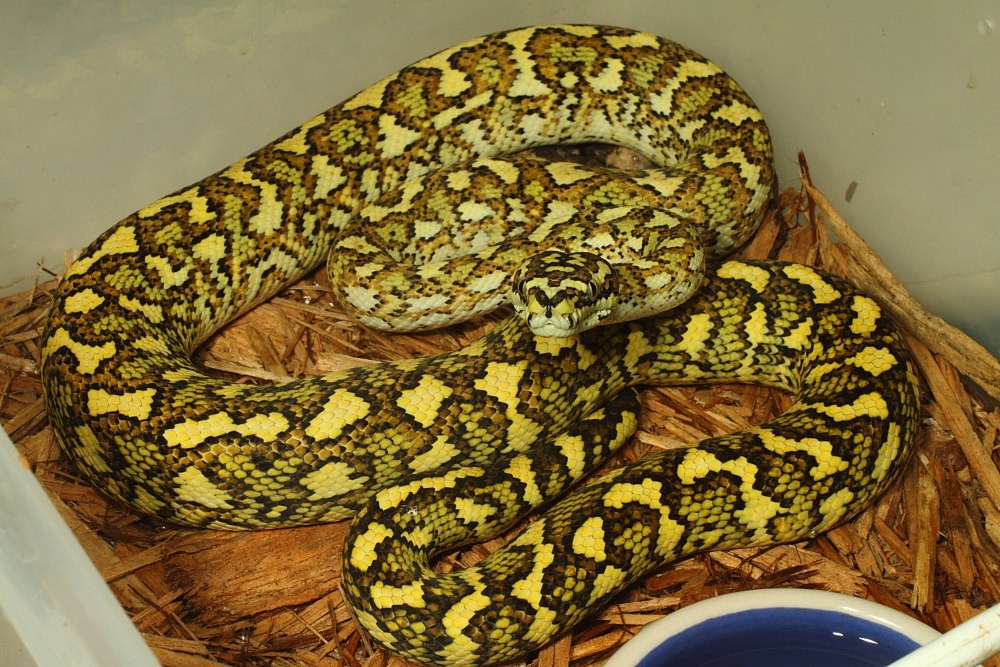
Isn’t this Jungle Carpet Python crazy looking?! It is one of a kind and a Super Form from what the Ball Python Crowd refers to as a, “Dinker Project.”
I noticed that the mother of this snake looked just a bit odd when it was a baby. I bought her, bred her, and then bred one of her male offspring back into her to get a super form of the co-dominant gene that she carried. I know a lot of kingsnake.com users attend Reptile Shows so I will share my story about buying the mother of this snake.
All morning long I was busy at this show vending at my table and I was unable to make a round until around lunch time. When I arrived at one of the better Carpet Python vendor tables there was a crowd standing around looking at a baby JCP in a deli cup marked $350.00. They were all commenting under their breath about the little snake, but for me there was no discussion. I peeled off the cash, handed it to the vendor, and then picked up the cup with the snake.
All the guys said, "WHOA!! I was thinking about buying that” . The vendor looked at me and said, “That snake will turn out to look normal and so will all the babies.” I made two replies. To the crowd I responded, “You can keep thinking about buying it, but I just bought it.” To the vendor I said, loud enough for all to hear, “If this $350 female JCP turns out to be normal I will more than break even selling her normal babies.” There are lessons to be learned in all of this but don’t ask me what they are. I am just trying to have fun and I am relegated to but one of these crazy looking JCP after about 10 years of effort.
Wednesday, September 30 2015
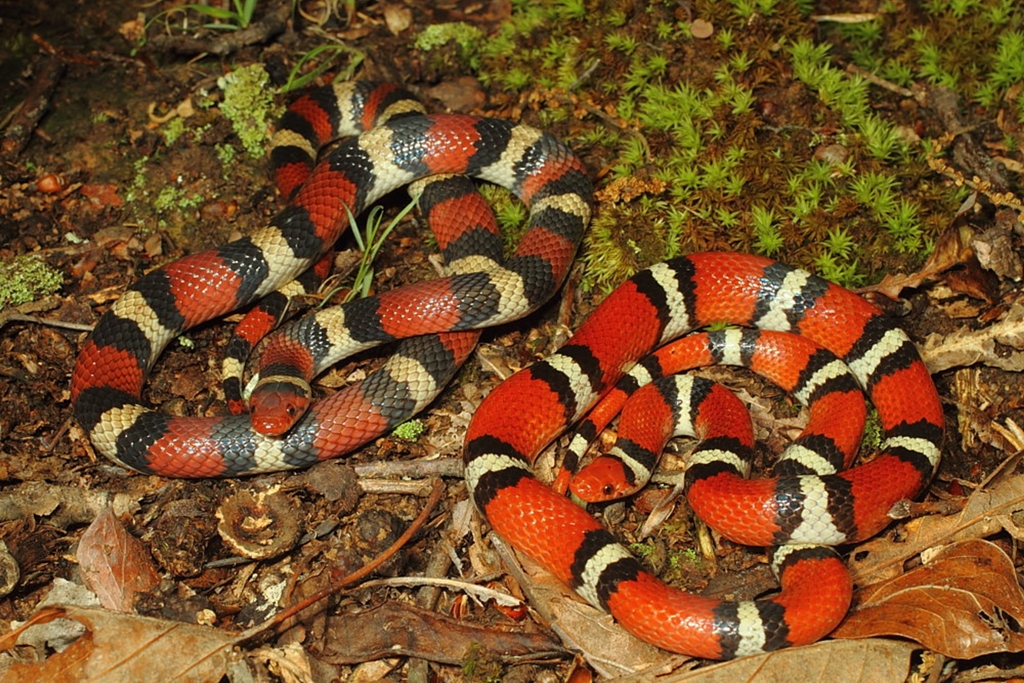
Finding examples of the Scarlet Kingsnake ( Lampropeltis triangulum elapsoides) in Kentucky can be quite difficult. On a scale of 1-10 I give them a solid 7.5, perhaps lower if you live in or close to a county where they occur. As for myself, I have to drive over 3 hours each way to be in the game.
The easiest way to locate this species in my area is to road cruise for them. I can run that drill, but I prefer to utilize and deploy artificial cover, and by doing so I, along with my colleague Phil Peak, was able to locate a sexed pair under metal this year. A cast shed from the male was under the metal and the female was just preparing to shed as you can see in the photo of both snakes. These snakes were found in mid to late April and we believe that they were preparing to mate or less-likely had already bred. There is always a reason or series of reasons why snakes are found when and in the way in which they are located. Interpreting this information is something I find interesting as it helps to increase the number of snakes I find in the future!
I want to welcome everyone to my first kingsnake.com blog and want to thank Jeff B and everyone else here for the opportunity. I plan to have both captive and field-oriented posts that will focus on snakes but will also include lizards, frogs, salamanders, turtles, and crocs! Because this is my first effort here, I wanted to kick things off with a kingsnake!
|


